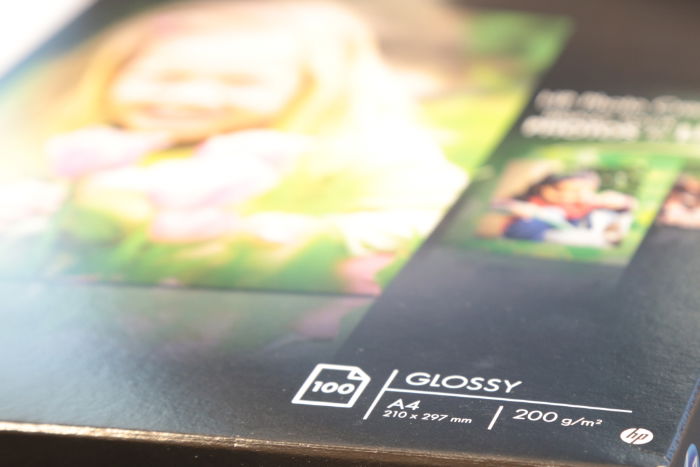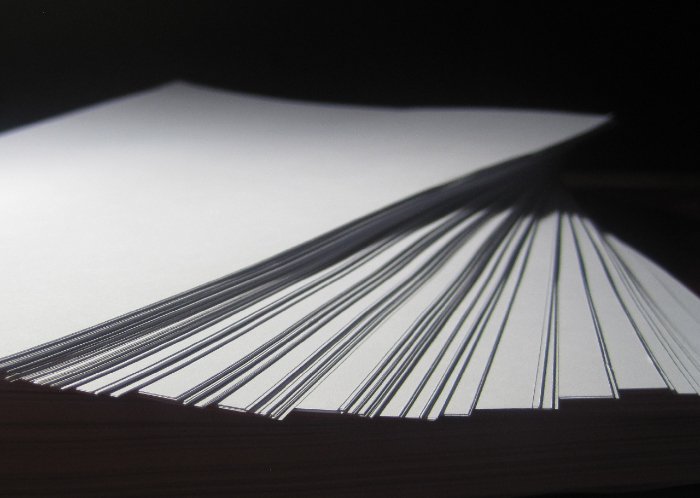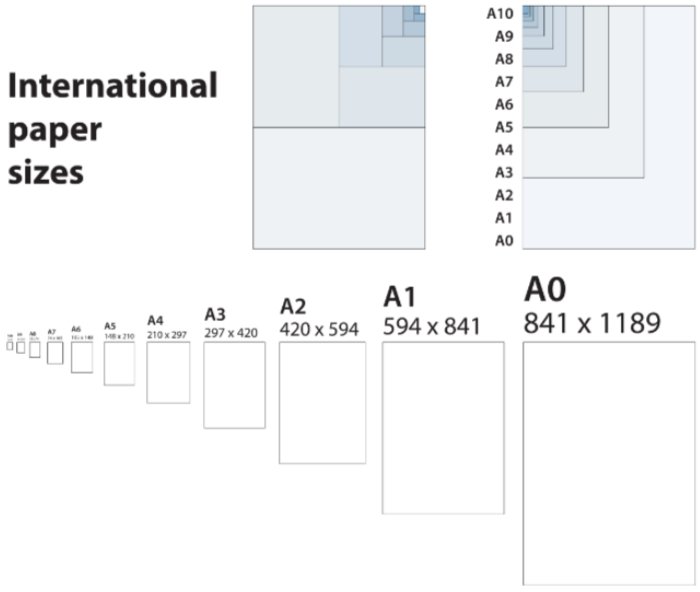The Canon luster photo paper tops our list. The print quality is exceptional. And the luster finish gives your photos a professional look. The prints are suitable for sale and gallery display and don’t fade over time. [Note: ExpertPhotography is supported by readers. Product links on ExpertPhotography are referral links. If you use one of these and buy something, we make a little bit of money. Need more info? See how it all works here]
What is the Best Photo Paper?
There are many different photo papers on the market. Different types of paper give you different results. There are different price ranges. And many companies produce high-quality photo paper. We have more information on paper types in the section below. We look at their size, thickness, and finish in detail. This information will help you find the exact photo paper you need. Here’s a quick overview of our list of the best photo paper for inkjet printers. We’ll look at each paper in more detail in the following section. Or you can skip to the Finding the Best Photo Paper section at the end of the article.
12 Best Photo Papers for InkJet Printers
Here are the top photo papers for inkjet printers. We’ve included something for every photographer. We have everyday photo papers for printing your favorite holiday snaps. And we have premium papers for professional photo printing. Hitting that sweet spot between glossy and matte, this Canon luster photo paper lifts images without making them sparkle. It is ideal if reflected light is a problem. And at 260 gsm (grams per square meter), it has some heft. The finish helps to resist smudging. And Canon, of course, recommends using Canon ink. Photographers will appreciate the range of available sizes, which goes up to 9 x 13 inches (22.8 x 33 cm). As with all the major inkjet printer manufacturers, HP recommends using HP ink with its photo paper for added print durability. And HP paper tends to produce better results if you have an HP printer. This is certainly true when it comes to cheaper photo paper. The HP everyday glossy photo paper is reliable, with the added appeal of FSC certification. That means you can expect good-quality prints every time. And the standard is very good for good-value, sustainable paper. You’ll have a fabulous collection of printed photos for your walls, mantles, and albums. There’s not much to choose between luster and semi-gloss. And this Epson premium semi-gloss photo paper is designed to replicate the resin-coated papers of a photo lab. Epson claims their inks have a degree of water resistance, meaning an accidental splash won’t spell disaster! This is a heavy paper that should give fabulous results for display purposes. And it’s available up to 13 x 9 inches (33 x 22.8 cm). The quality of the colors, details, and finish give you photo prints you can display or sell. The weight of this Epson matte presentation paper means it is more multi-purpose than the glossy paper reviewed earlier. By its very nature, matte photo paper produces excellent text quality. So while this paper will produce sharp images, it can also be used for brochures and reports. This paper is a bit flimsy for passing photos back and forth a lot between friends. But your black and white prints will look good without breaking the bank. This is high-glossy baryta photo paper. It’s from the highly-respected German company Hahnemühle. They have been manufacturing paper on the same site since the 16th century. And they’ve set the standard for their environmental credentials. This photo paper gets the “rag” in its subtitle because it’s made from 100% cotton fibers left over from textile manufacturing. At 315 gsm, this is another heavyweight photo paper aimed at long-lasting displays and fine art. A high-gloss finish provides crisp detail. And the cotton paper gives a natural warmth to highlights. It’s available in various sizes, including rolls up to 64 inches ((1.62 m) wide. Hahnemühle offers a sample set of six different photo papers, including two sheets of each type. You can download Hahnemühle ICC profiles for all their photo papers if you’re very technical and detailed. That gives you a better idea of what you can expect before printing your best photos. This glossy photo paper from Koala is excellent for at-home printing. It’s excellent value, so you don’t need to take out a loan to print a full holiday album. And the colors and detail are excellent. They will be worthy of display in anyone’s home. The photo paper is thin. That can be handy for some photographers. But it also means the photos are more susceptible to wear and tear. You’ll need something stronger for professional displays or selling prints. But it’s an excellent photo paper for sharing with families and friends. At 300 gsm, this HP Premium Plus paper has a quality feel to it. And the glossy finish produces clear, crisp images. This photo paper receives high praise in customer reviews. And it is another HP photo paper that is FSC certified (environmentally friendly). The glossy surface is water-resistant and resists smudges by drying instantly. The colors and details are outstanding. And there’s very little fading over time, so your memories stay strong for years. Ilford has been making photo paper since 1879. And it was one of the first traditional photo paper manufacturers to move into digital media. The Ilford Galerie Prestige smooth, pearl photo paper has a non-reflective surface that dries instantly. It is available in a range of sizes up to 17 x 22 inches. And used with HP Vivera inks, this photo paper has been assessed by Wilhelm Imaging Research as having a permanence rating for over 200 years. Canon’s flagship premium glossy photo paper was developed from the previous Paper Pro PR-101. The Platinum PT-101 combines deep, rich blacks with a neutral, natural-looking white. The glossy surface gives crispness to the final print. And the surface of the coating helps improve drying times. Instant-dry and compatible with all printers, Epson’s Ultra Premium photo paper produces images with brilliance and deep gloss. The color rendition is bright and accurate. And the tones are true-to-life, giving accurate renditions of your finest photographs. It is available in various sizes up to 8.5 x 11 inches. The ink dries instantly and has a degree of water resistance in case of accidents. And it gives you durable prints that last a long time. What sets Unkit’s presentation matte paper apart is that it prints double-sided. Not much use if you’re hoping to display your photos, but in that case, you would probably opt for a heavier weight stock. But it does offer a solution for many situations beyond printing reports. Cards, brochures, and leaflets will benefit from having a smooth, printable surface on both sides. Despite being relatively inexpensive, it produces bright colors. And the surface and thickness help to avoid the bleed-through that you would get with ordinary 80 gsm office paper. It’s not paper you’d use whenever you want to print your photos. But it’s ideally suited for specific purposes. It’s also available in 5 x 7 inches (12.7 x 17.8 cm) and US letter size (8.5 x 11 inches or 21.6 x 27.9 cm). The overall quality of the photos is very high despite the value-price and branding. It’s a good choice if you need to print a lot of photos but don’t want to break the bank. You will need something stronger for selling prints. But this paper produces excellent photos for family and friends.
Finding the Best Photo Paper
Although we live in a digital world, there’s nothing quite like looking at photos in your hands. And what photographer doesn’t like having their best photos displayed on a wall in all their glory? But choosing an appropriate printer and the best photo paper to print your masterpieces can be confusing. A quick online search of local electronics shops returned 154 results for “photo papers.” So we’ll narrow down your choices to determine the best photo paper for your inkjet printer. Inkjet printers are a modern miracle that we take for granted. But getting the best out of them means carefully choosing the right paper and ink.
How to Decide What Paper is Best for You
When choosing the best photo paper for inkjet printers, we must make a few choices. What weight is best? Which finish is best? Most of the answers to these questions will be determined by a few factors:
What do you want to do with the print? How and where will you display it? What are your printer’s capabilities?
If your printer doesn’t have a direct paper feed, you are limited in the weight of paper you can use. It’s worth checking, as many printers have a rear slot for envelopes or heavyweight paper. Check the manual to establish the maximum weight that works for your printer. Relatively cheap photo paper lets you print out photos for making cards or putting them on display. But for higher-quality display purposes, you want paper with a heavier weight. And you also want the better finish you get from high-quality photo paper.
What is Paper Weight?
We live in a connected world, but there are still some significant areas of divergence. One of these is how we define paper types. In the US, paper weight is expressed in pounds (lb). And everywhere else, it’s listed as grams per square meter (g/m2 or, more commonly, “gsm”). With US paper, you might also find the type of paper included listed as “80 lb cover paper” or “80 lb text paper.” These are two different weights of paper—216 gsm and 118 gsm, respectively. And weight, of course, measures thickness. The heavier the listed weight, the thicker the paper is. The everyday printer paper we use for printing our essays and letters to the bank manager is usually 80 gsm. This same paper is listed as 54 lbs in the US. In general, fine art paper is thicker. And everyday paper comes in a variety of weights.
Choosing the Correct Paper Size
And to add to the fun, the sizes are often different. US letter size (8.5 x 11 inches or 21.6 x 27.9 cm) is standard for regular office printing, whereas others would use A4 (8.3 x 11.7 or 21 x 29.7 cm). The good news is that a normal photo, which you might send your granny for the holidays, works well in both imperial (4 x 6 inches) and metric (10 x 15 cm). And even better news, this is the same ratio of a full frame or APS-C photo, which is 2:3.
Printer, Ink, and Paper Quality
It seems obvious, but the quality of your printer will have a big impact on the quality of your prints. If you want fine art photography prints, then you will need a high-quality printer to print on high-quality photo paper. You will also need to know about pigment inks and how they react with the paper’s surface. Do you need archive-quality art paper that will be resistant to UV light? Do you want a textured matte finish, like canvas, or do you need sticky-backed photo paper? And if you want to preserve our environment, one of your criteria might be increased sustainability. Some papers carry certification from the Forest Stewardship Council (FSC). This certification addresses sustainability factors. It covers the production, packaging, and transportation of goods.
What Finish Should You Choose?
The surface finish of the paper has a significant impact on the final print. It can affect how visible the image is, especially if there’s glare where you’re displaying it. You also want to consider the finish if you’re displaying it behind glass. The finish can also determine how much your picture “pops” off the page. You can read our articles comparing photo paper finishes:
Luster vs glossy Glossy vs matte
Conclusion
In conclusion, Canon Luster photo paper is the best for inkjet printers. It offers a great combination of brightness and vividness, resulting in beautiful and vibrant images. We’ve also shown budget photo papers for use at home. They might not have the dazzling pro finish of the premium brands. But they still give you gorgeous photographs you can display at home or share with friends. So there’s a photo paper for every photographer!


































































